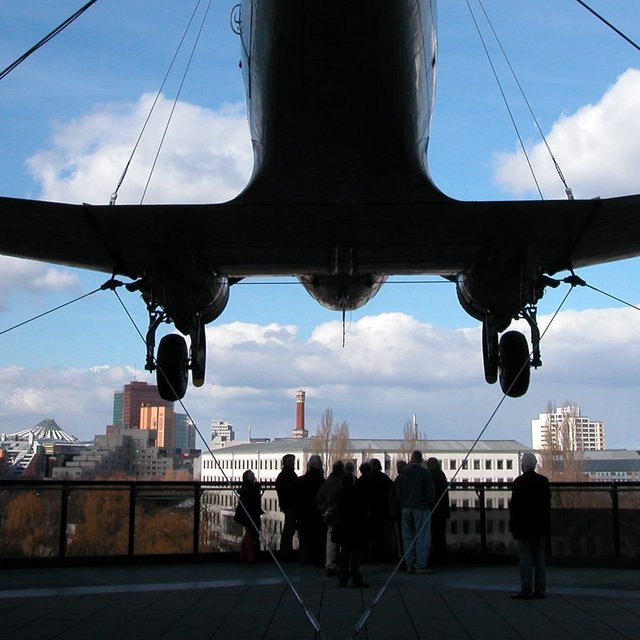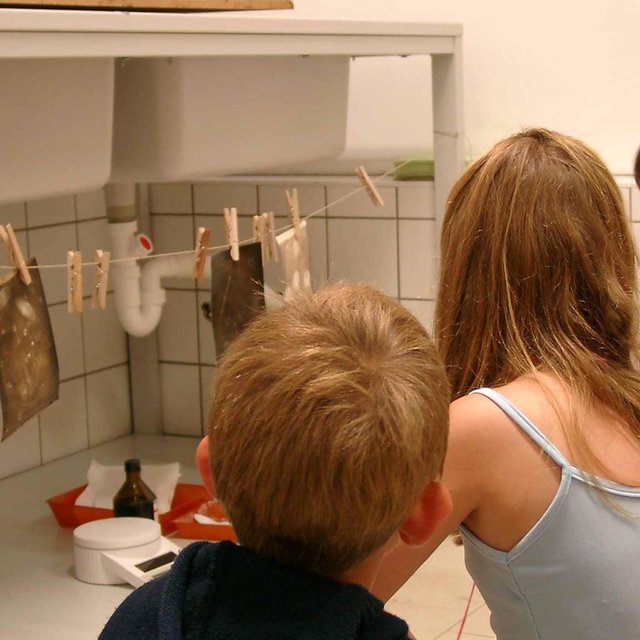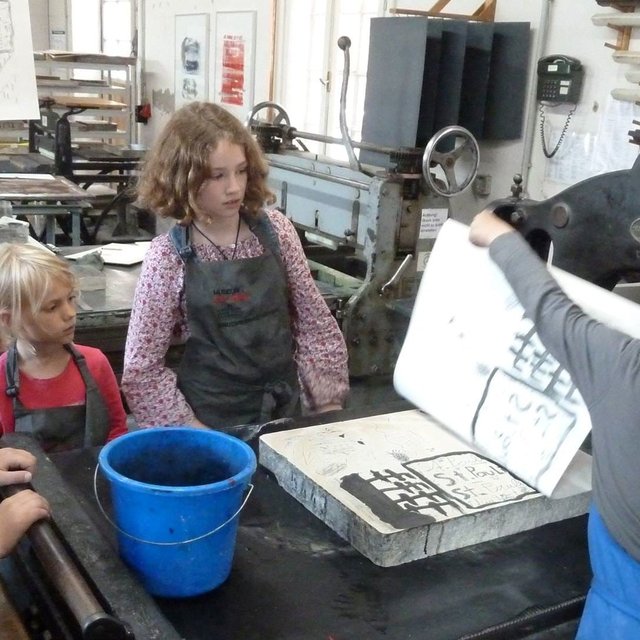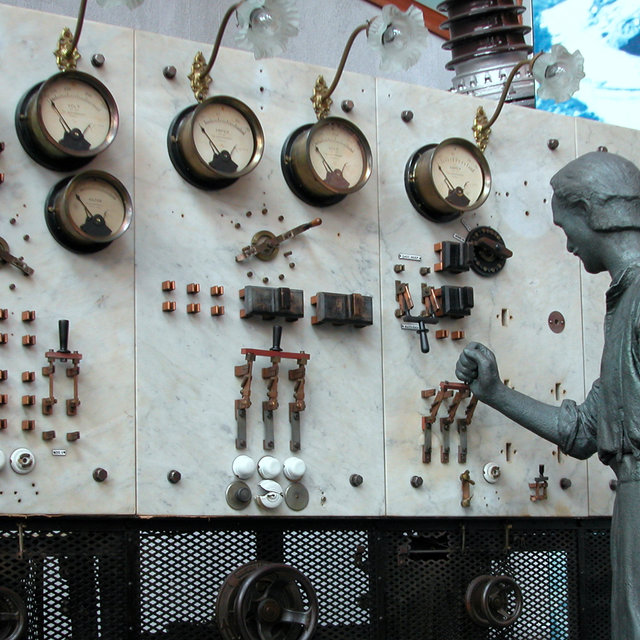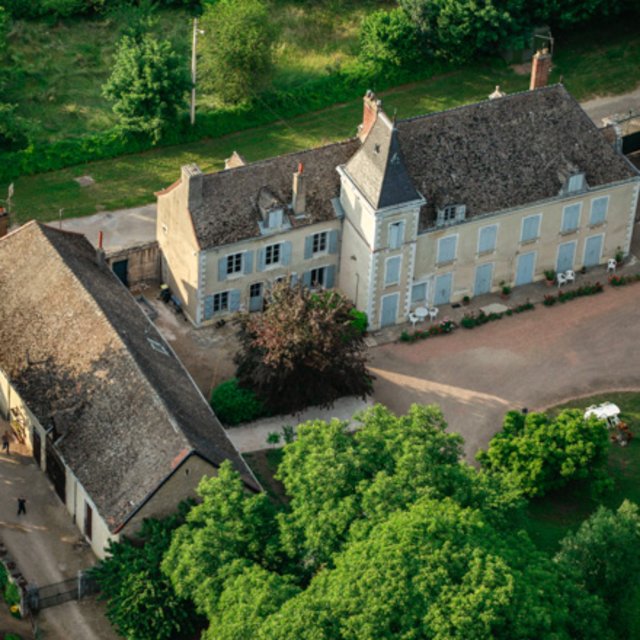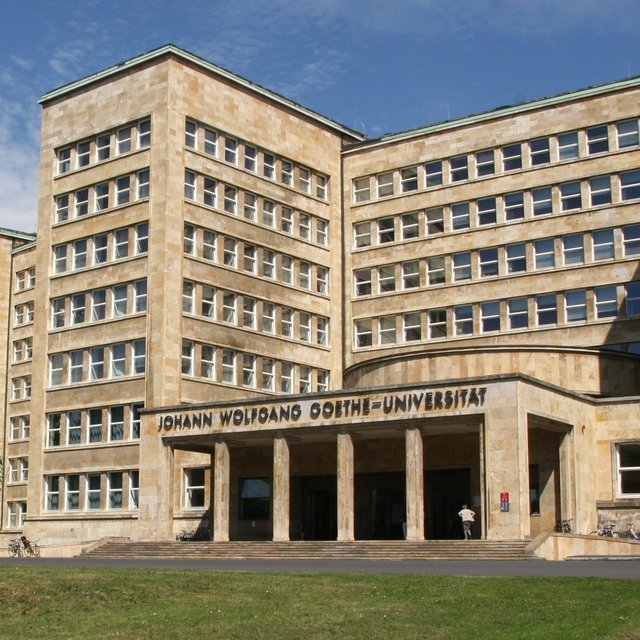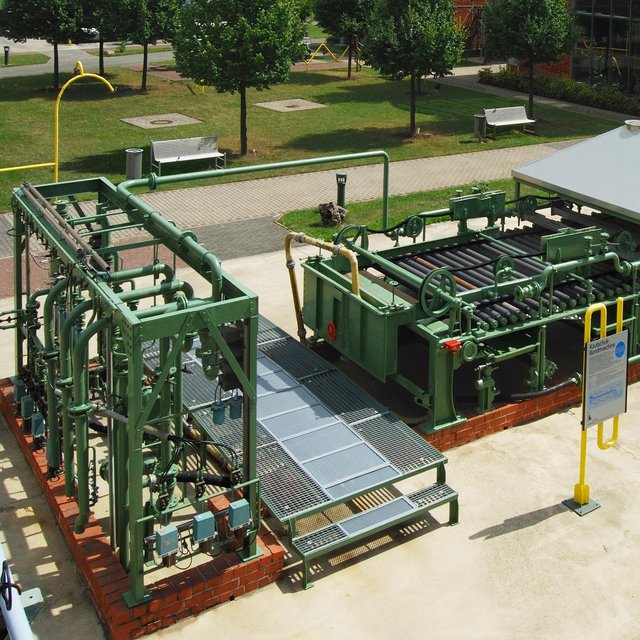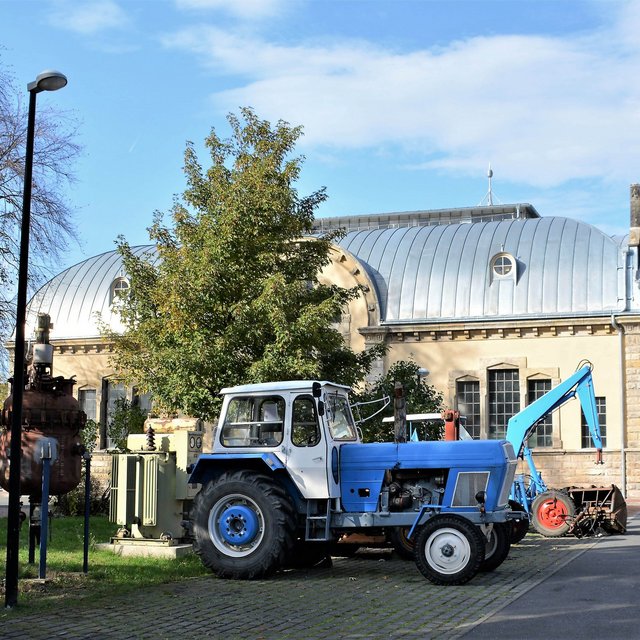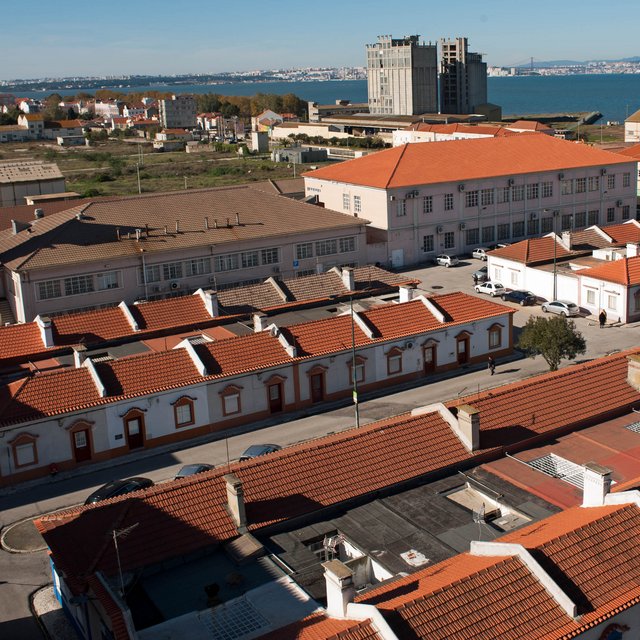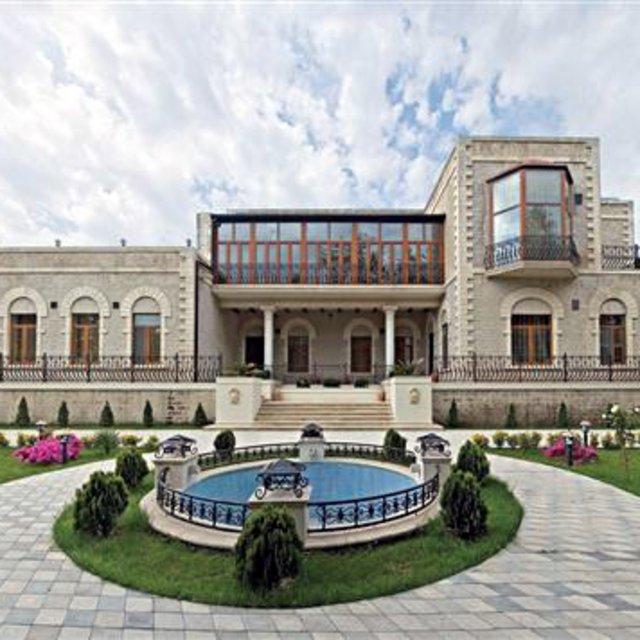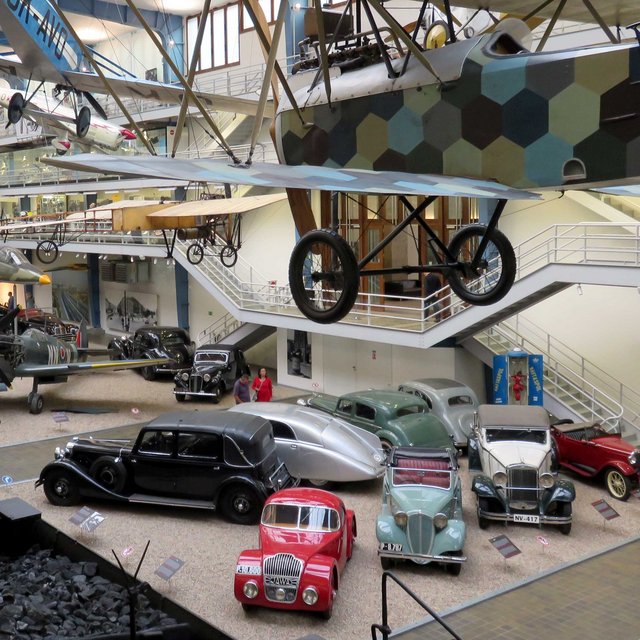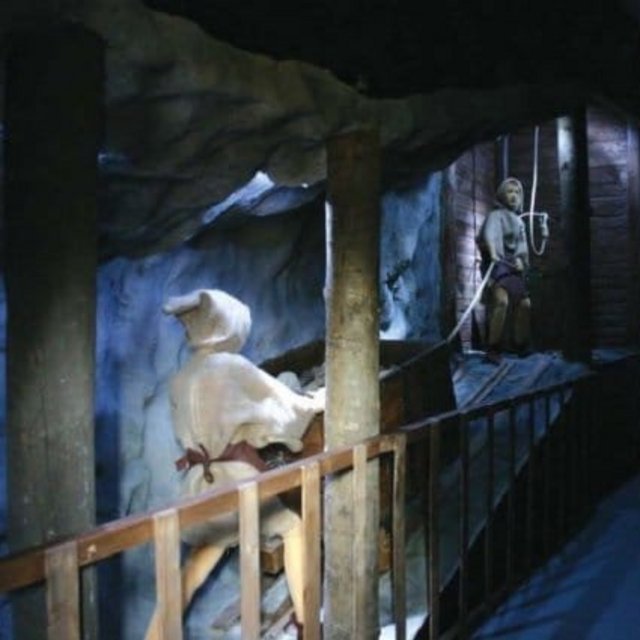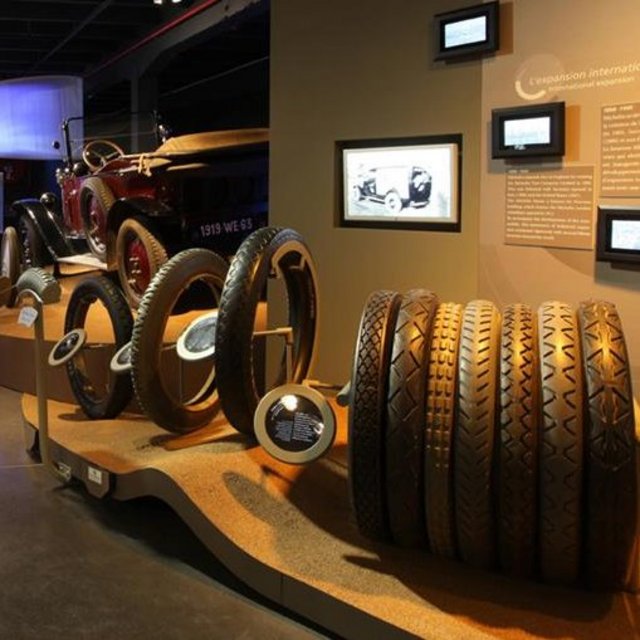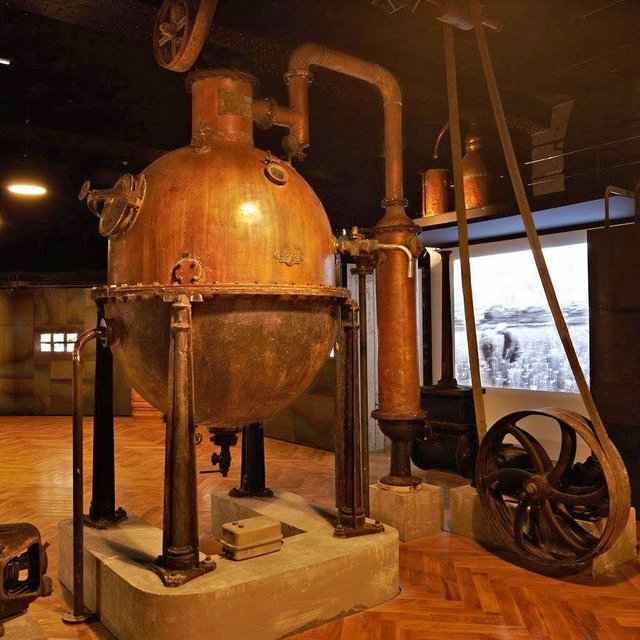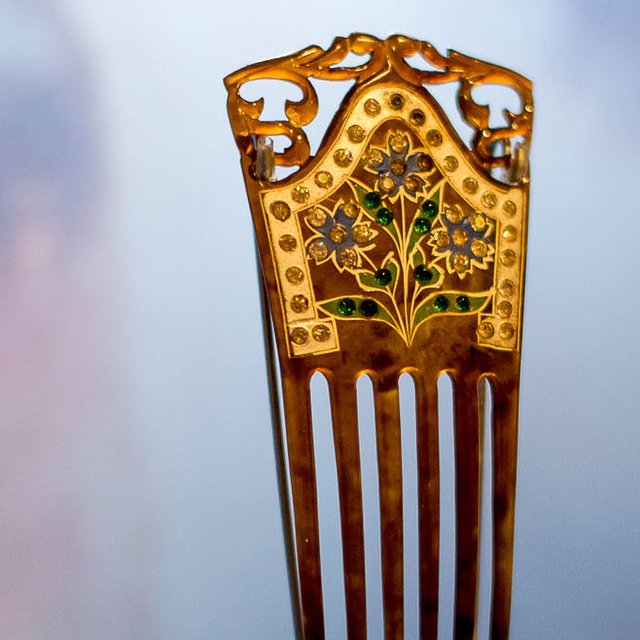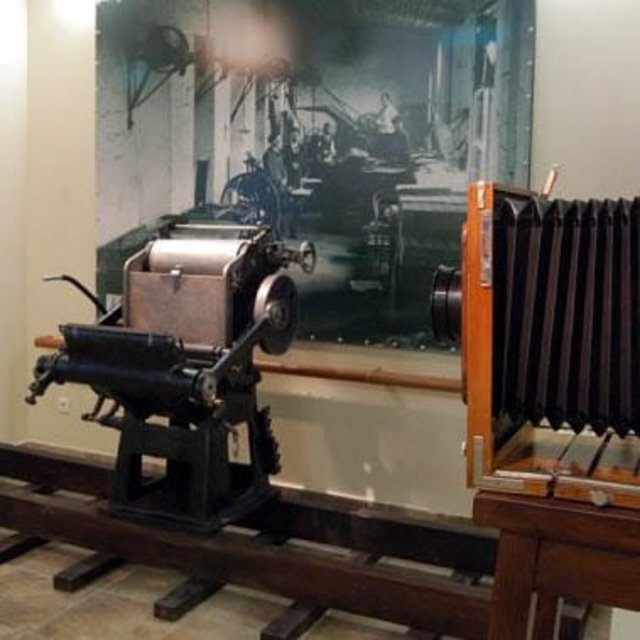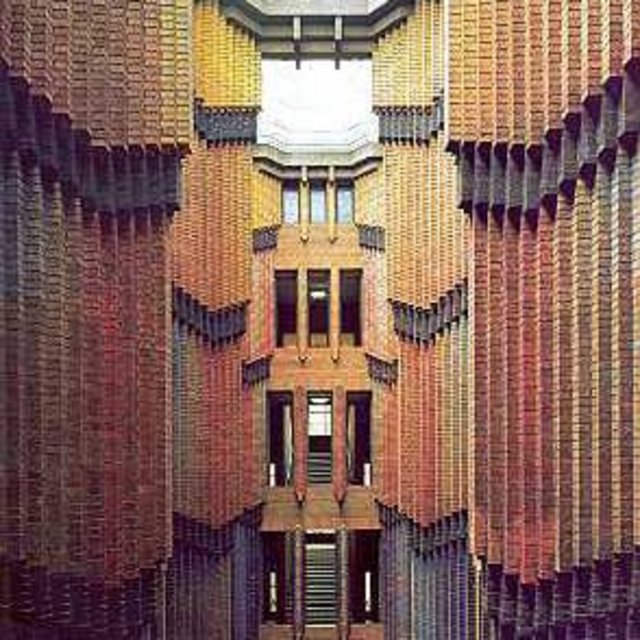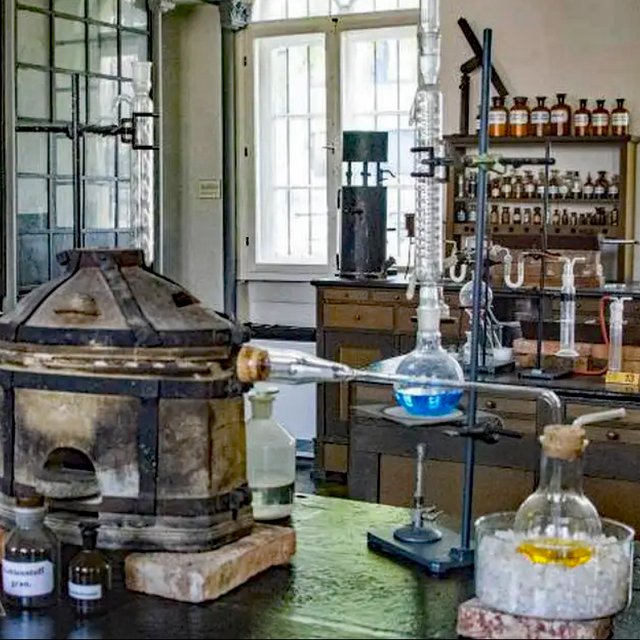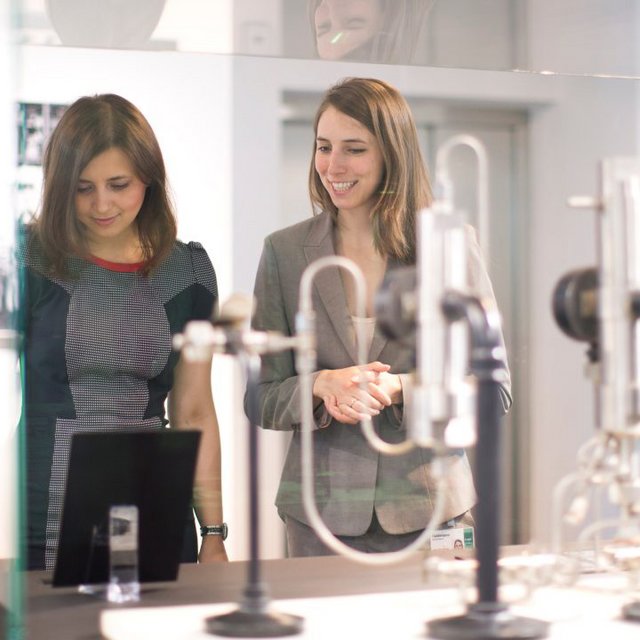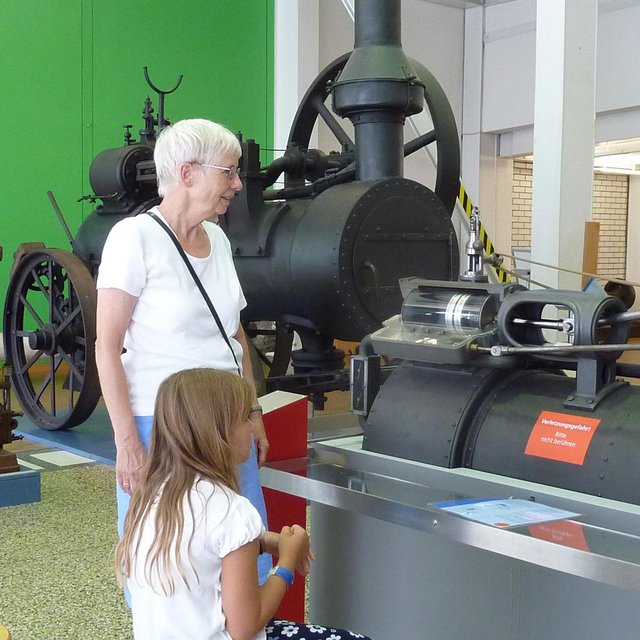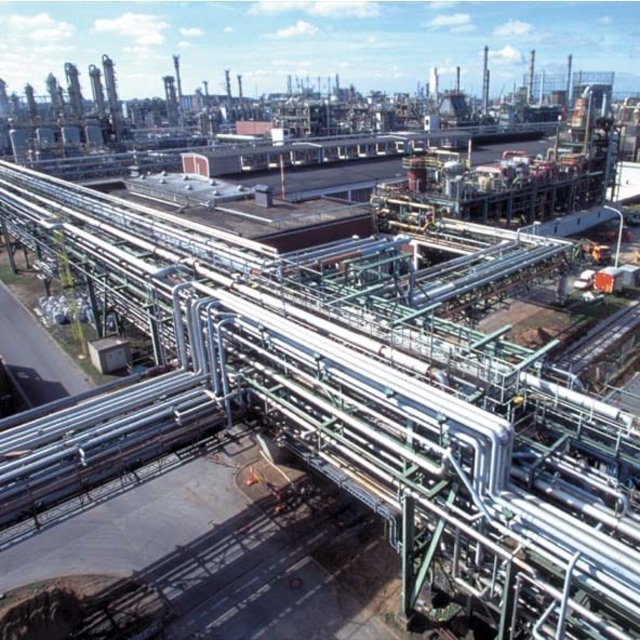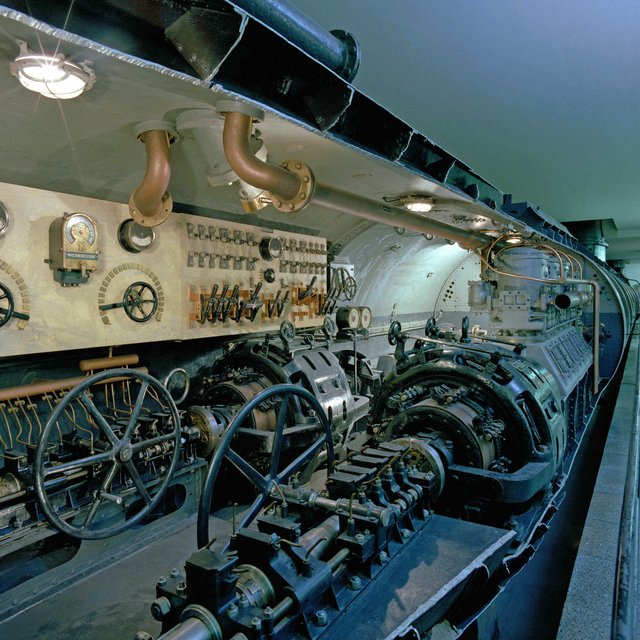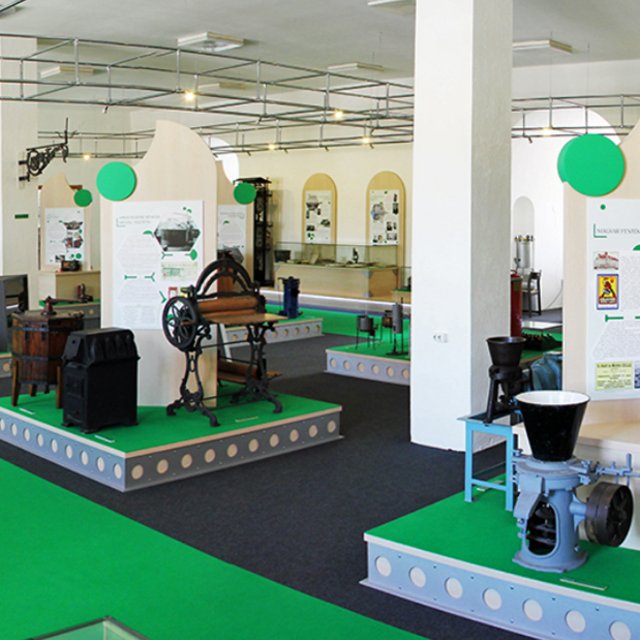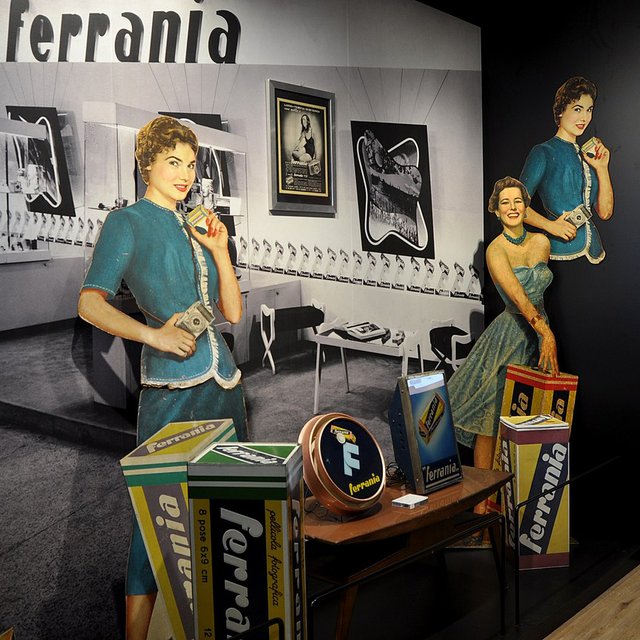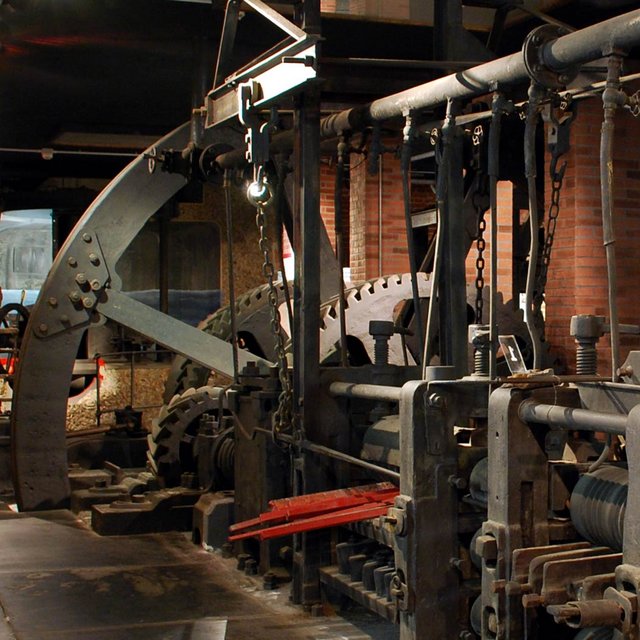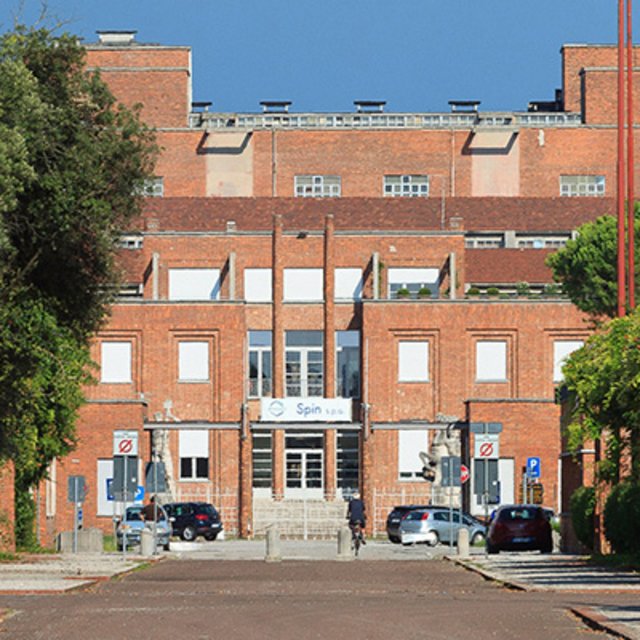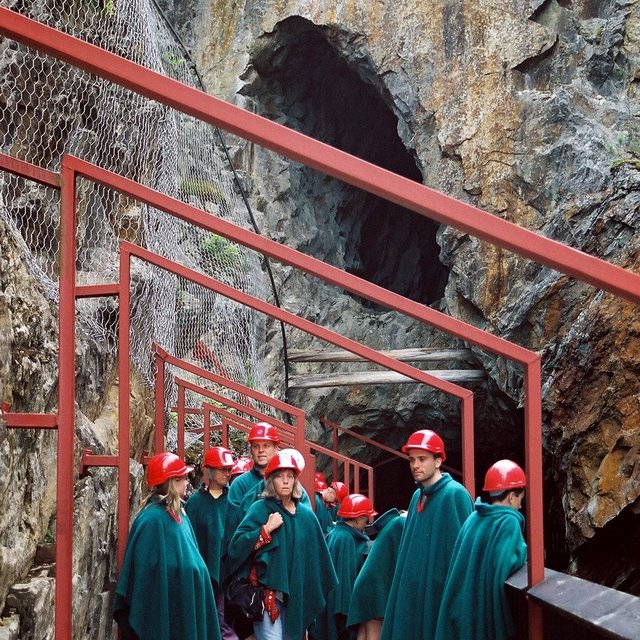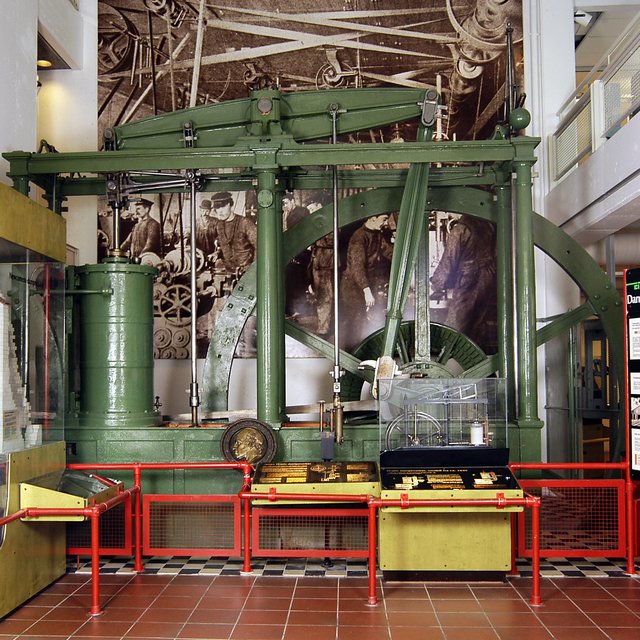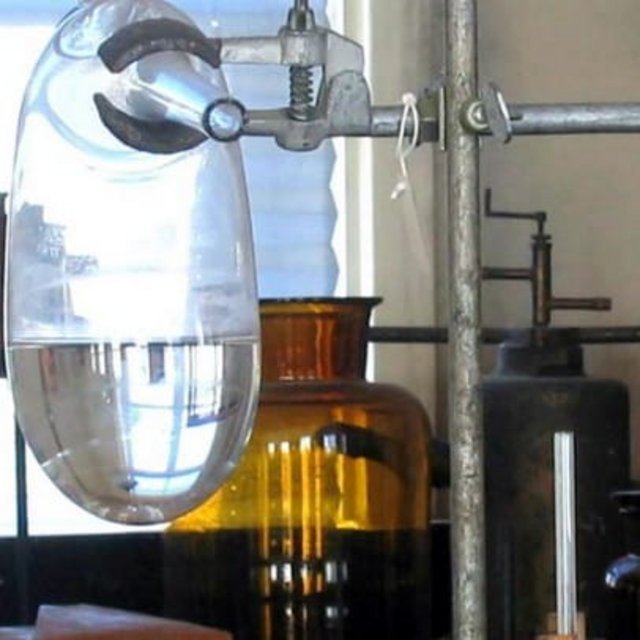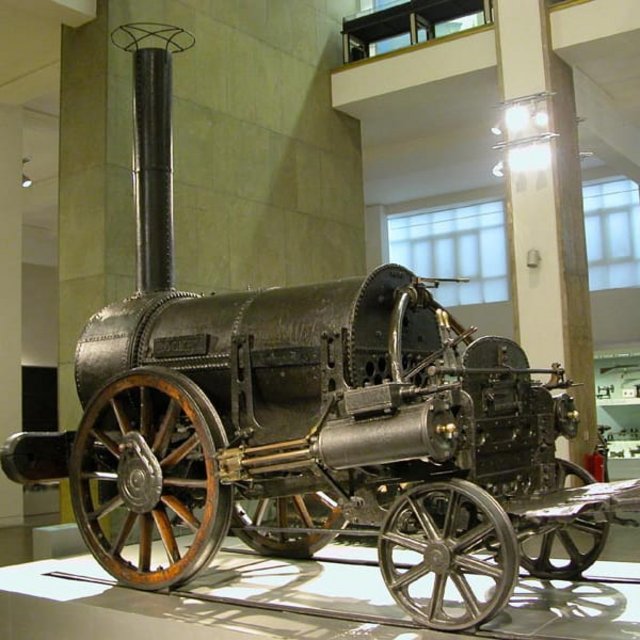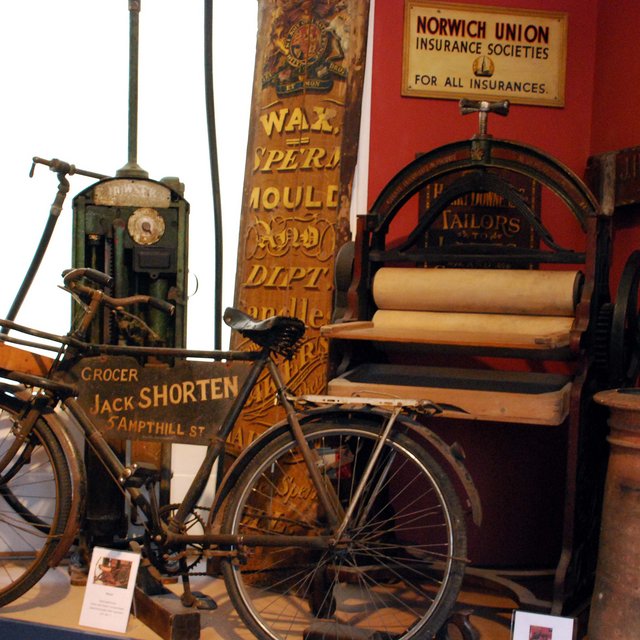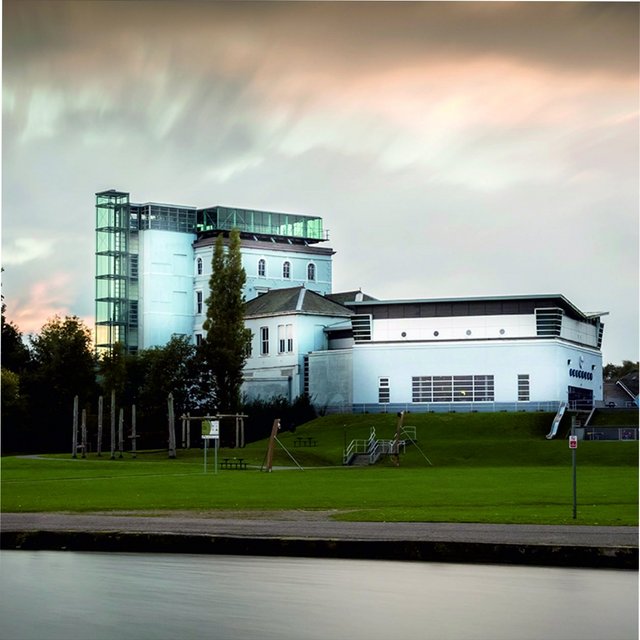European Themeroute | Chemistry
The emergence of the chemical industry was triggered by the mechanisation of English textile production in the second half of the 18th century. The output of the new spinning and weaving machines increased rapidly, and manufacturers needed new chemicals to clean and bleach the vast quantities of linen ... more
 Chemistry
Chemistry
The emergence of the chemical industry was triggered by the mechanisation of English textile production in the second half of the 18th century. The output of the new spinning and weaving machines increased rapidly, and manufacturers needed new chemicals to clean and bleach the vast quantities of linen and cotton fabrics. Three substances rose to prominence: sulphuric acid, soda and chlorine. However, their closely related production processes caused serious damage to nature and human health.
Traditionally, sulphur was leached from shale and burned to produce sulphuric acid: the acid vapours were collected in vessels with water and distilled. In 1746, the English entrepreneur John Roebuck introduced lead chambers to collect the vapours. Production could now easily be increased by enlarging the chambers, and sulphuric acid became the first industrial chemical. Factories supplied acid mainly for pickling metals until demand exploded for bleaching linen and cotton. By the beginning of the 19th century, the first continuous manufacturing process was in place - a prerequisite for large-scale industrial chemical production.
Soda, chemically "sodium carbonate", was also used for bleaching, but was also a basic material for the production of glass and soap, which was also needed for textile processing. For a long time it was produced according to a principle patented by the French chemist Nicolas Leblanc in 1791: sulphuric acid and salt were heated in a furnace, the resulting "salt cake" was roasted together with lime and coal, and the water-soluble soda was then washed out of the "black ash". The process made cotton goods and glass much cheaper, but released many highly toxic by-products.
Chlorine also became an industrial product early on, thanks to its ability to bleach textiles - including rags used in paper production. The first effective bleaching agent was produced by a French factory in 1789: chlorine was added to a lye of potassium carbonate to produce "chlorine water". A few years later, the Scottish chemist Charles Macintosh discovered that chlorine gas was absorbed by slaked lime: This made a bleaching powder available - practical for industrial use, but extremely harmful to health in production.
Since its discovery in 1709, coke has been used in the iron industry for its high calorific value - and at the turn of the 19th century, a by-product of coking gave rise to a new branch of chemistry: coal gas. From 1807, gas lighting became widespread in England. First in textile mills, which produced gas on site from coal, then for street lighting: cities built huge cylindrical gas tanks in central gas works, from which "town gas" was distributed through cast-iron pipe networks. Later, long-distance pipelines from coal-rich regions were also used.
In the second half of the 19th century, during the "second industrial revolution", chemistry became the leading industrial sector alongside electrical engineering. One reason for this was that researchers were able to identify active ingredients with increasing precision. As early as the 1840s, John Bennet Lawes in England and Justus Liebig in Germany had identified the substances on which plant growth depended: Once nitrogen, potassium salt and phosphorus had been identified, it was possible to increase agricultural yields with artificially produced substances - and for the first time in history to establish secure food production independent of the weather.
On the other hand, theorists had gained insights into the structure of chemical elements: The "structural formula" developed by Friedrich August Kekulé - the most famous example being the benzene ring - made it possible to describe the composition of countless chemical compounds, thus simplifying their artificial production, or "synthesis". Chemistry took on a new face. From now on, science played a central role, as analyses were mostly carried out in university laboratories before the rapidly expanding industry could synthesise the active ingredients.
Now a second by-product of coal coking came into play: Researchers identified active substances in coal tar that could be used to synthesise dyes and, soon, medicines. In 1856, the Briton William Henry Perkin produced violet from the aniline extracted from the tar. Soon after, artificial indigo blue was made, also from aniline, and then red from madder, the root of dyeing red, was replaced by alizarin. These two dyes were developed by the Badische Anilin- und Soda-Fabrik (BASF), one of the three German chemical companies founded in the 1860s, along with Hoechst and Bayer, which overtook the English companies as the world's leading tar-dye-based corporations.
When it became apparent that paints also contained therapeutic agents, companies developed the production of medicines as a second mainstay. Initially, antiseptics were synthesised from germicidal substances, followed by antipyretics. New discoveries by bacteriologists such as Louis Pasteur and Robert Koch soon led to the development of vaccines, and by the end of the century Hoechst and Bayer had achieved unprecedented sales with the painkillers Pyramidon and Aspirin.
The basic substances established in the 18th century continued to be produced using improved processes. The Belgian Ernest Solvay revolutionised the production of soda ash in the 1860s. In a production process based on common salt, lime and ammonia, he used solutions rather than solids and lower temperatures than the established Leblanc process. In addition to using less energy, Solvay achieved two advances that would characterise the development of the chemical industry: The process was continuous and could largely be run in a cycle - in particular, the expensive and toxic ammonia was largely reused. The company named after the inventor still produces much of the world's soda ash using the same principle.
In the 1880s, rapid advances in electrical engineering made electricity cheaper and more attractive as an energy source for the burgeoning electrochemical industry. Electrolysis uses electricity to break down chemical compounds - the American chemist Charles Hall and the Frenchman Paul Héroult produced aluminium from aluminium oxide in 1886. Chlorine could be produced so efficiently that traditional bleaching powder came under massive price pressure. Electrothermics, on the other hand, used heat mainly to operate the new, extremely hot electric arc furnaces that produced steel alloys and carbide for acetylene lamps.
The last major development of this era was in fertiliser production. Since it was known that plants needed nitrogen, potassium salt and phosphates in certain proportions, numerous fertiliser factories had sprung up, and famines caused by weather fluctuations in the rich regions of the world could be put to an end. In Germany, however, there was a shortage of nitrogenous fertilisers until the chemist Fritz Haber succeeded in synthesising ammonia from hydrogen and atmospheric nitrogen in 1909. His colleague Carl Bosch then developed an industrial process at BASF to produce nitrogen fertiliser. Ammonia synthesis" was ready for use in 1913 and is still the most important process for fertiliser production today. At the same time, it is the most striking example of the two sides of chemistry: it helped to alleviate hunger, but was first used to make explosives - without which the German Empire would probably have been forced to surrender at the beginning of the First World War for lack of ammunition.
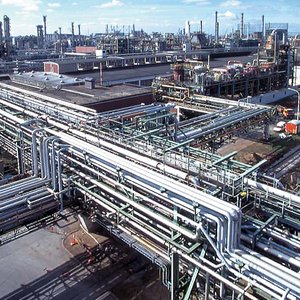
ERIH Anchor Points
German Technical Museum
Trebbiner Strasse 9
10963
Berlin, Germany
Industry and Filmmuseum
Chemiepark Bitterfeld-Wolfen
Areal A
Bunsenstr. 4
06766
Bitterfeld-Wolfen, Germany
Museum of Work
Wiesendamm 3
22305
Hamburg, Germany
National Museum of Science and Technology of Catalonia
Museu Nacional de la Ciència i la Tècnica de Catalunya (MNACTEC)
Rambla d’Ègara 270
08221
Terrassa, Spain
Member Sites ERIH Association
Nicéphore Niépce Mansion Museum
Musée Maison Nicéphore Niépce
2 rue Nicéphore Niépce
71240
Saint-Loup-de-Varennes, France
Poelzig Building, former IG-Farbenhaus
Norbert-Wollheim-Platz 1
60323
Frankfurt am Main, Germany
German Chemistry Museum Merseburg
Rudolf-Bahro-Straße 11
06217
Merseburg, Germany
Schönebeck/Elbe Museum of Industry and Art
Erlebniswelt Technik und Innovation (iMUSEt)
Ernst-Thälmann-Straße 5a
39218
Schönebeck/Elbe, Germany
Baía do Tejo Industrial Museum at former Companhia União Fabril (CUF) Area
Museu Industrial Baía do Tejo
Parque Empresarial da Baía do Tejo
2830-314
Barreiro, Portugal
Sites
Villa Petrolea
Nobel Avenue 57/2
1025
Baku, Azerbaijan
National Technical Museum
Národni technické museum
Kostelni 42
17078
Prague, Czech Republic
Muzeum Sokolov
Zamecka 160-1
35601
Sokolov, Czech Republic
The Michelin Adventure
L’Aventure Michelin
32 Rue du Clos Four
63100
Clermont Ferrand, France
Fragonard Perfume Museum
Musée Fragonard
20 Boulevard Fragonard
06130
Grasse, France
Museum of Combs and Plastics
Musee du Peigne et de la Plasturgie
88 Cours de Verdun
01100
Oyonnax, France
Nobel Brothers Batumi Technological Museum
3 Leselidze Street
6001
Batumi, Georgia
Peter Behrens Building
Industrie Park Hoechst
Brüningstraße 45
65929
Frankfurt am Main, Germany
Liebig Museum
Liebigstraße 12
35390
Gießen, Germany
BASF Visitor Center
Carl-Bosch-Straße 38
67063
Ludwigshafen, Germany
TECHNOSEUM. Museum of Technology and Labour
Museumstrasse 1
68165
Mannheim, Germany
Chemical Industry Estate
Ausstellung im Informations-Centrum (IC)
Paul-Baumann-Straße 1
45764
Marl, Germany
Deutsches Museum
Museumsinsel 1
80538
München, Germany
Museum of Chemistry of the Hungarian Museum of Technology and Transport (MMKM)
A Magyar Műszaki és Közlekedési Múzeum (MMKM) Vegyészeti Múzeum
Hunyadi utca 1
8100
Várpalota, Hungary
Ferrania Film Museum
+39 019 50707403
https://www.ferraniafilmmuseum.net
https://it.wikipedia.org/wiki/Ferrania_Film_Museum
Via Luigi Baccino Ospedale, 28
17014
Cairo Montenotte, Italy
National Museum of Science & Technology – Leonardo da Vinci
museo nazionale della scienza e della tecnologia "leonardo da vinci"
Via S Vittore 21
21023
Milan, Italy
CID Documentary Information Centre Torviscosa
CID Centro Informazione Documentazione Torviscosa
Piazzale Marinotti 1
33050
Torviscosa, Italy
Cobalt Works and Mines
Blaafarveværket og Koboltgruverne
3340
Åmot, Norway
Norwegian Museum of Science and Technology
Norks Teknisk Museum
Kjelsåsveien 143
0491
Oslo, Norway
Nobel Museum in Karlskogs & Bofors Museum
Nobelmuiseet i Karlskoga og Bofors Museet
Björkborns Herrgård
Björkbornsvagen 10
69133
Karlskoga, Sweden
Science Museum
Science Museum
Exhibition Road
South Kensington
SW7 2DD
London, United Kingdom
The Museum of Norwich at the Bridewell
Bridewell Alley
NR2 1AQ
Norwich, United Kingdom
Catalyst
Mersey Road
WA8 ODF
Widnes, United Kingdom


